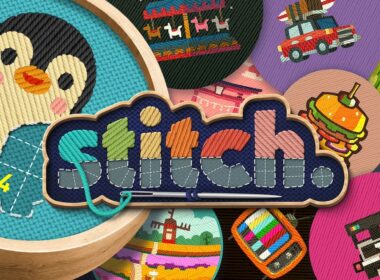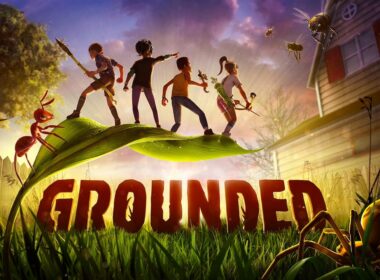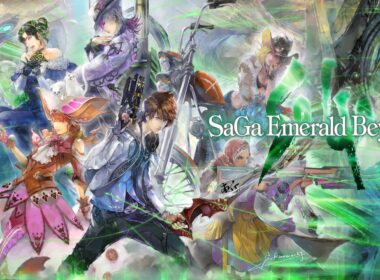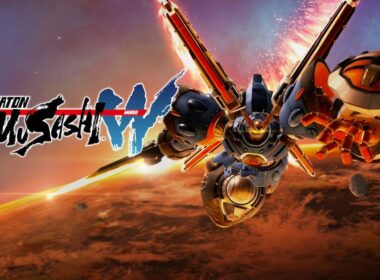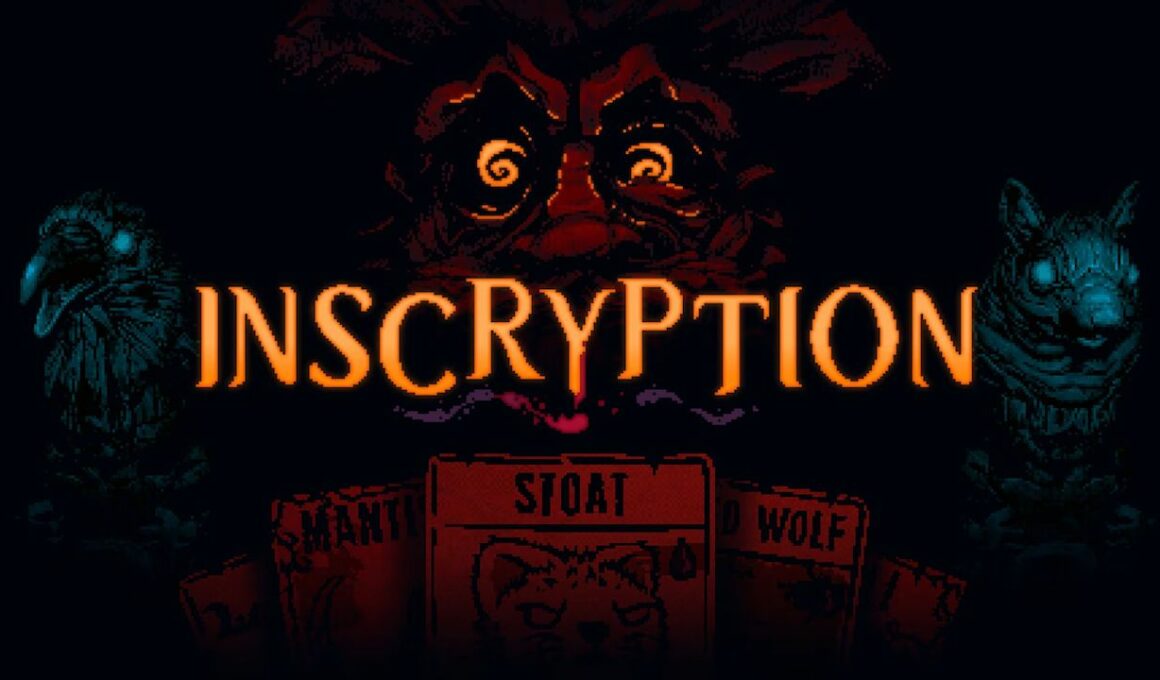Inscryption is one hell of a game to write about. This is mainly because it exists as one of those elusive games your friend will tell you about in hushed tones. “Dude, you gotta check out this cool game. Look up nothing about it and just play it!” That’s how it was pitched to me, and when I asked what it was about I got the added qualifier of “It’s a trading card game mixed with a rogue-lite!” This wasn’t a good sell, because I happen to dislike both of those genres of game. To cut my friend some slack, that’s about as good of a sale as I could probably make myself if constrained to two Discord DMs. If you haven’t played Inscryption, and I piqued your interest with this intro paragraph then stop reading now and go play this game. Look up nothing else further, and enjoy the ride.
I don’t aim to spoil the game in the following review, but it is a very easy game to spoil. The appeal of the game is in how it never aligns with your expectations, with about two-thirds of the game not reported on in the marketing. I will not be talking about this content, but just know that this goes places you probably wouldn’t expect. For fans of developer Daniel Mullins, this is to be expected. His works are often devilishly subversive, and this is no exception.
The setup of Inscryption is as follows: You wake up in a cabin, seeming to have been kidnapped by a foreboding figure that refuses to let you leave until you beat him in a tabletop RPG of his making. He is essentially acting as a DND-styled dungeon master, and the battle system is that of a trading card game similar to Magic the Gathering. At least, that’s what I’m told anyway. I don’t like Trading Card Games, but a different friend who loves them and is a massive fan of Inscryption has told me that there are plenty of similarities.
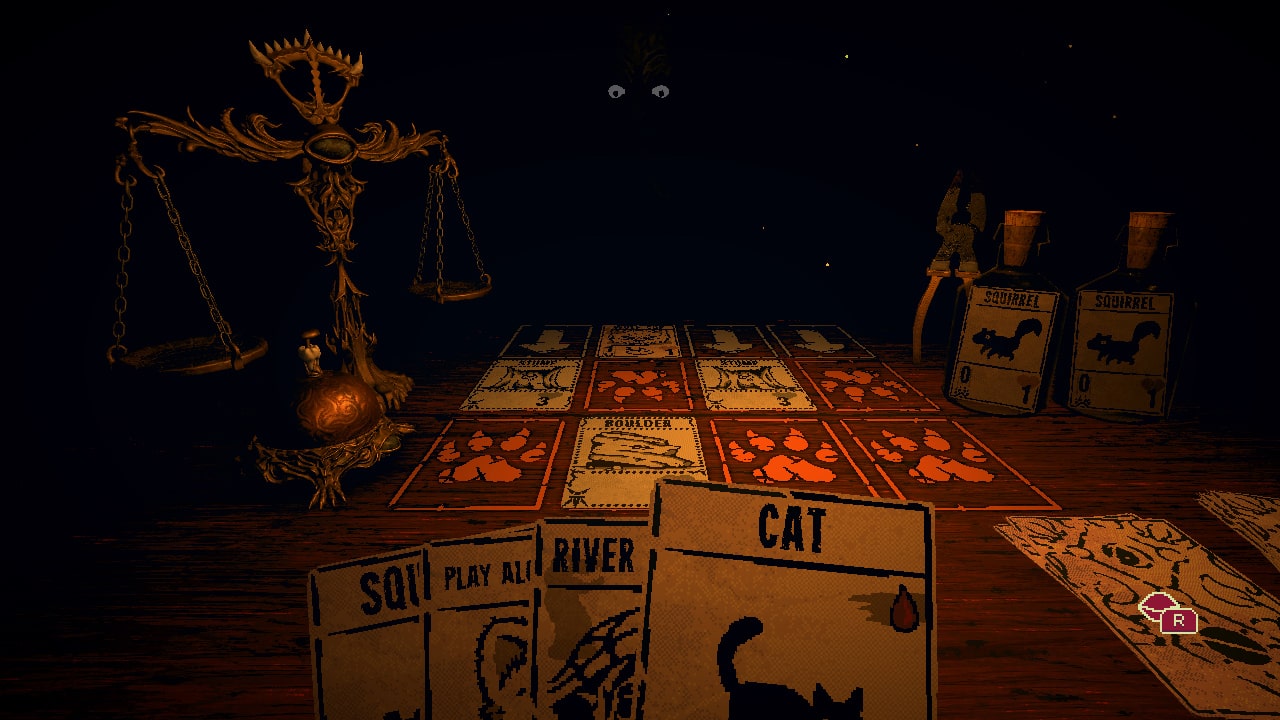
All the cards will be on a 3×4 plane, with only one of those rows being yours. If you have a card face another card, it’ll damage that card. If you have a card facing an empty space, you’ll attack the opponent’s Life Points directly. The rules of the game involve you collecting a deck of cards, each with four important values: Attack, Defense, Cost, and Effect. I’ll forgo explaining Cost, because there are many different kinds of this and some of those could be spoilers. Attack and Defense are much simpler, with a card being able to kill another card if the attack is greater than Defense. If it is not, it will still subtract from the defense if it attacks. Effects are too expansive to explain here, but they can be anything from being able to ignore enemies and attack the opponent directly to being able to attack in multiple directions at once. Since most cards can only attack directly in front of you, this means that you can double or even triple your damage output. Set things up in a way that this card is in front of all empty spaces? You’ve done serious damage.
That’s just one of several techniques you can take advantage of to get ahead, and you’ll want to do that since the game isn’t designed around being fair. The randomized nature of the game map, with each run offering different paths and possible penalties to get along the way, makes the game unfair by nature. You have a series of maps and bosses you need to make your way through, with stops along the way where you could buy items, get new or upgraded cards, or fight enemies. During all of this, even moments when you find a camp event to rest at, you always feel at the whims of a winding and dangerous forest. You feel lost in an endless maze, with every creature inside wanting you dead. It builds a great atmosphere, with each death being more frustrating and horrifying than the last.
A bad game designer would present either of these two distinct game mechanics as they were, but the great one who made this game managed to have both woven together with expertise. With each run, you’re learning how to optimize your strategies, and learn new tricks about how to break the game in your favor. Under the survival horror coating, there’s a pretty fun card game underneath this. You can have time to play that at its most simplistic, but I think a lot is added by the inclusion of the rogue-lite horror elements.
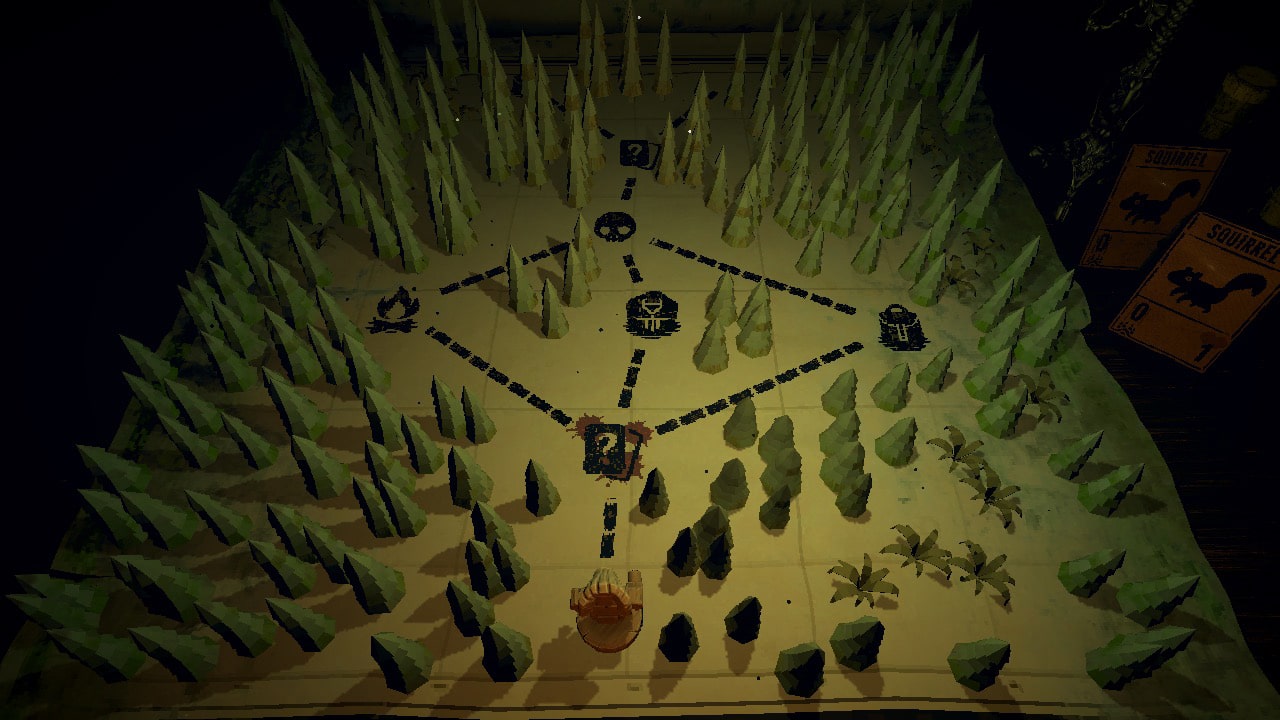
You have up to two lives in each run, and when you lose both of them things won’t be pretty. The game master will kill you by turning you into a card, with the next player waking up and having to start from the beginning. You aren’t left to start entirely from ground zero, as various things you find around the cabin will help your repeated escape attempts.
The gameplay, as fun as it is, wouldn’t hit half as hard if not for the horror-tinged presentation surrounding it. The cabin you’re in isn’t just a backdrop, you can actually leave the game table at any point you’re not in battle. The game master will let you explore, probably because he’s always able to keep his eyes on you. There’s never a moment where you will feel truly safe in Inscryption, even when you’re winning. It might be possible to win without exploring the cabin, but I don’t entirely know how you’d do that. What items you find here help bend the rogue-lite in your favor, which works out because the odds are stacked against you severely from the beginning. You feel like you’re fighting to regain control,
In regards to the Switch version, the porting team did a truly excellent job converting it from the original PC release. The more you play, the more clear it becomes that Inscryption was designed to be a PC game. So the fact that they were able to remove the mouse interface without losing anything, and if anything likely making the game play more efficiently, shows just how good of a port we’re dealing with. I never felt like I was playing the inferior version of a game, I just felt like I was playing a cool game on Switch. The best ports are invisible, and outside of a couple of moments, I think they adapted this game excellently.
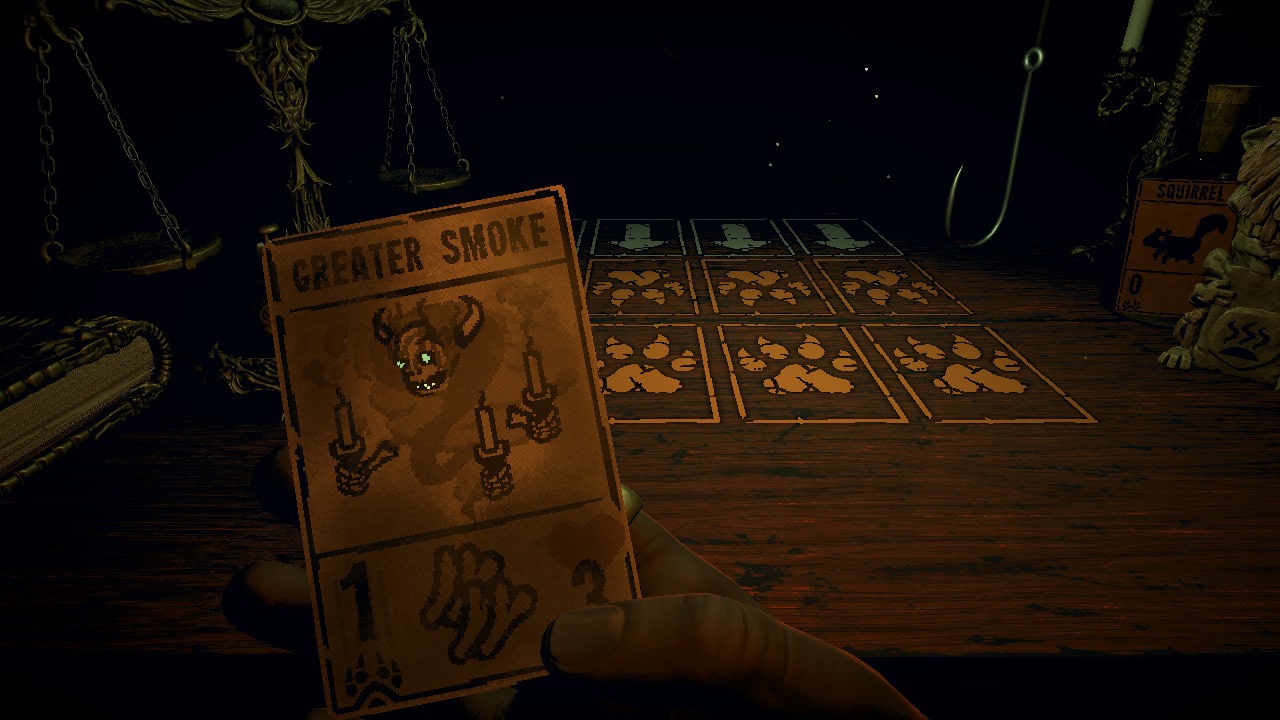
It plays at a good framerate, the resolution is crisp on TV and the Nintendo Switch screen, and it sounds excellent. The only problem I came across during my time with the game was during the end, where when transitioning game states to the finale the scene didn’t load properly. During this, instead of showing a 3D space, it flashed a white screen nonstop until I exited to the main menu and then came back in. Thankfully this game autosaves almost constantly, so nothing of value was lost, but for my photosensitive readers please brace yourself for that if it happens.
I spent many runs of Inscryption finding myself frustrated by RNG, my own mistakes, or a combination of both. The game will simply let you plunge into the depths of frustration, confident the entire time that you’ll come back at some point to run it all back. The reason that this review has taken so long is because I found myself absolutely filtered on several occasions, but each time I’d come back I’d find the new binge session being even longer than the last.
Inscrpytion did the impossible, it made me want to buy a booster pack of a card game. Not even a particular card game, but just any so I could relive the feeling of buying them as a kid and seeing what I’d get. Maybe I’ll even boot up a run of Rogue Legacy, since it’s been a few years. Or, I could just play more Inscryption. I could continue to theory craft about my newly discovered Mullinsverse, fascinated by the ways Inscryption begs players to dissect it down to the pixel. This game was made with an infectious love of card games, rogue-lite games, and just games in general. I have to say, I’ve caught the bug.
Version Tested: Nintendo Switch
Review copy provided by Devolver Digital

